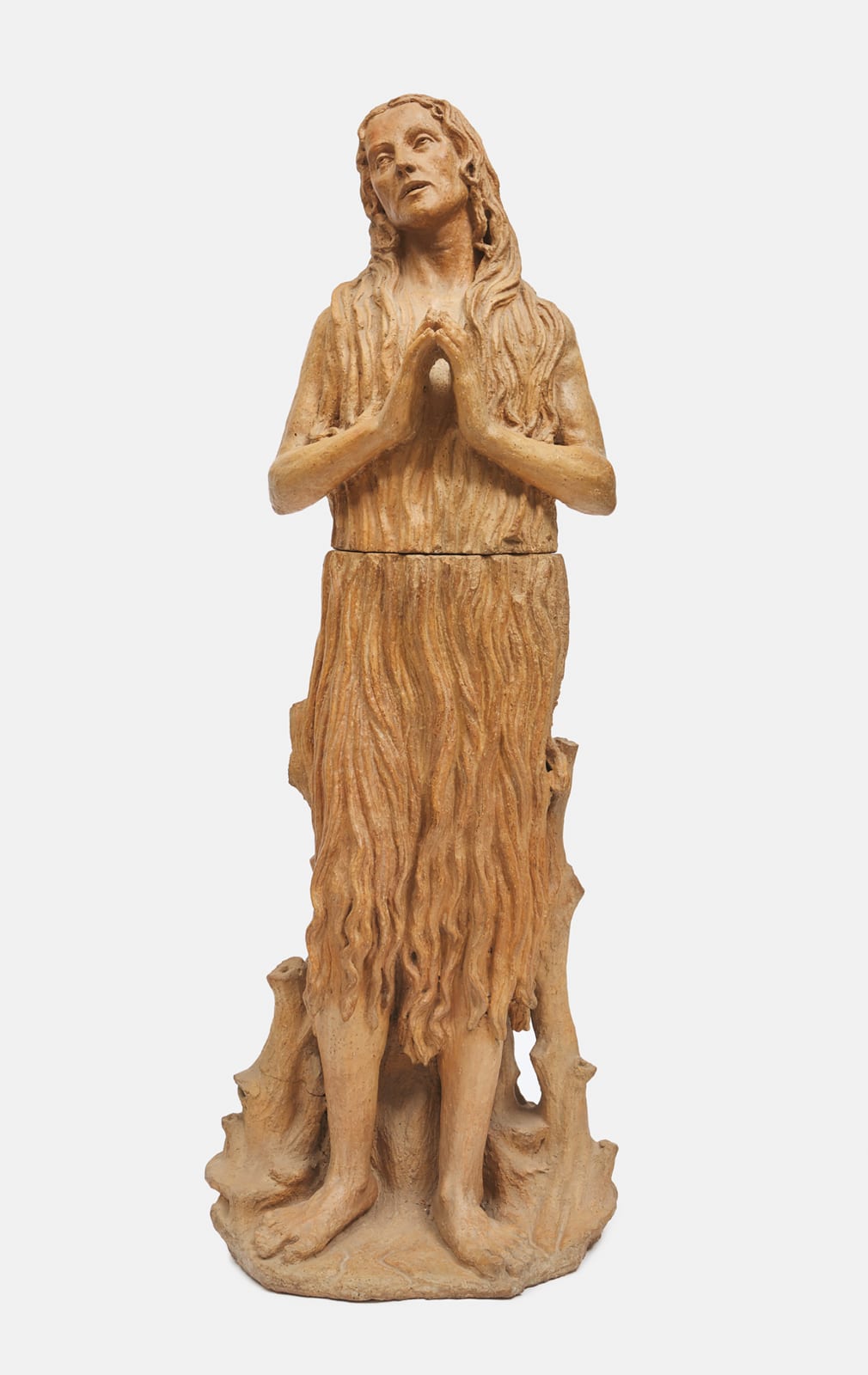-
Artworks

Leonardo Di Domenico Del Tasso (Italian, c. 1464-1500)
Santa Maria Maddalena in Preghiera, c. 1500terracotta62 1/4 x 23 1/4 x 13 3/8 in. | 158 x 59 x 34 cmAccording to the four Gospels, Mary Magdalene travelled with Jesus along with his disciples, bearing witness to his miracles and later his crucifixion, burial, and resurrection. Sometime during the early...According to the four Gospels, Mary Magdalene travelled with Jesus along with his disciples, bearing witness to his miracles and later his crucifixion, burial, and resurrection.
Sometime during the early 14th century, a Dominican friar wrote a biography of Mary, depicting her as an ascetic ex-prostitute who lived a secluded life of penitence and self-flagellation. This later portrayal probably inspired Donatello’s (c. 1386–1466) ‘Penitent Magdalene’, which shows Mary gaunt and frail, clasping her hands in prayer. Donatello’s work, which was made for the baptistry in Florence has become one of the most recognisable images of Magdalene and a key image of Early Renaissance art.
The present model, cast in two large sections of terracotta that join at the figure’s hip, bears a great resemblance to Donatello’s version and it seems likely that del Tasso (1464–1500) would have known the master’s work. Here we see Mary depicted on a small rocky spur. Her body is wrapped in very long hair that has grown during years of penitence and now covers her naked body. The saint’s hands are clasped in prayer and her deep set eyes look towards the heavens.
The work is a particularly early example of terracotta being used during the Renaissance, the medium having all but disappeared in Western art since the fall of the Roman Empire.